Welcome to New Player’s Guide, the first stop on your journey to playing D&D. This series has advice for players who’ve just joined their first D&D campaign, as well as Dungeon Masters who want help taking their new campaign to the next level. To see the other articles in this series, check out the New Player’s Guide tag—and for the brass-tacks information on how to start playing D&D, click on the New Player Guide link at the top of this page!
In this installment of the New Player's Guide, we talk about tactical combat for both players and Dungeon Masters. Why would you want to play D&D tactically, rather than abstractly? What benefits are there to playing with maps and minis over just using your mind's eye? And can you really have a game that balances tactical combat with fun roleplaying, or is it impossible to do both?

Two Ways to Play
There are two main ways of battling monsters in D&D. One is called Theater of the Mind, and it involves the DM describing each situation that the characters are in, sometimes using simple visual aids to clarify complicated situations. Many people love this style of play, and unlike games that necessitate a more tactical ruleset, this method works perfectly well for most D&D players. You can read more about how to play in the Theater of the Mind like a master in this series by Mike “SlyFlourish” Shea.
The other method is called tactical play, and it involves using maps and miniatures to represent the approximate position of all characters in a scene in relation to their environment and one another. It can also be called gridded play, because these maps are divided into a grid of 1-inch-wide squares, each of which represents a 5-foot-wide area in the world of the game. The biggest advantage of playing with maps and minis is that there's no guesswork as to where each character is. Everyone at the table has a clear indication of where all the characters, monsters, and terrain elements are in the encounter.
A lot of people play D&D this way. The cast of Critical Role play the game this way, as do a lot of people who played a lot of third or fourth edition D&D, because those games’ rules put a lot of emphasis on tactics and positioning. Playing in this way can make your D&D session feel more like a game, rather than a free-flowing story, but that’s not necessarily a bad thing. Fifth edition D&D excels at providing an experience that sits roughly in the middle of hardcore tactical wargaming and totally free-form storytelling.
This is a guide for new players and DMs to get the most out of tactical combat. At its best, a tactical battle can be tense, exhilarating, and as much a puzzle as it is a battle. Using a map and miniatures can help you and your friends visualize the scene better, whether you’re playing in person with physical terrain and figures or online with digital tools. A bad tactical encounter can be a boring slog of bean counting and arguing rules minutiae—we’re here to help you get the best of the good and eliminate the bad.

For Everyone: Are Tactical Encounters Your Cup of Tea?
No matter who you are, you need to understand the basics of tactical combat if you want to play D&D using a map and miniatures. If you’re new to D&D in general, start by reading chapter 9: Combat of the D&D Basic Rules.
If you’re familiar with combat and want to your group to engage in more tactical encounters, start by asking your fellow players (including your DM, if you’re a player) if they want their encounters to be more tactical, and if they’d like to use a map and minis. If everyone’s on board, perfect! If people have reservations, talk about them with your group. This is a great opportunity to sit down and have a Session Zero discussion; this is okay even if you’ve been playing together for weeks, months, or years. It’s never too late to have an anything goes, honest discussion about what you like, dislike, or want in your game.
Try to figure out if your players:
- Like tactical video games like Baldur’s Gate, Divinity Original Sin, Fire Emblem, Final Fantasy Tactics, or others.
- Want the ranges and sizes of their spells, class features, and weapons to matter, rather than having the DM decide on the fly whether their foes are in range or not.
- Enjoy making challenging decisions in combat.
- Want to visualize the scenes their characters are in more easily using terrain and figures.
- Don’t mind combat moving a little more slowly in exchange for any of these things.
If they seem interested in any of these things (and don’t have any strong objections to any of the others), then try playing with a map and minis for a few sessions! If anyone is worried that playing in a way that emphasizes game mechanics and tactics, don’t worry. The cast of Critical Role play this way, and Matthew Mercer makes combats that are able to be tactical and story-driven all at once. You can have the best of both worlds!
In fact, not every encounter needs to be a tactical one! You can mix and match your playstyles, using Theater of the Mind for short combat encounters and using a grid and maps for major, climactic battles. This way, you don’t waste time pulling out maps and miniatures for inconsequential fights, and save the impact of using that terrain for when it’s most effective.
Now it’s up to the DM to create encounters with greater tactical depth. If you’re a player, you should learn a few basics of teamwork so your party can coordinate their tactics and become even more powerful. Dungeon Masters, you need to learn how to make fun tactical encounters. Skip past the For Players section and find the For Dungeon Masters information beyond it.
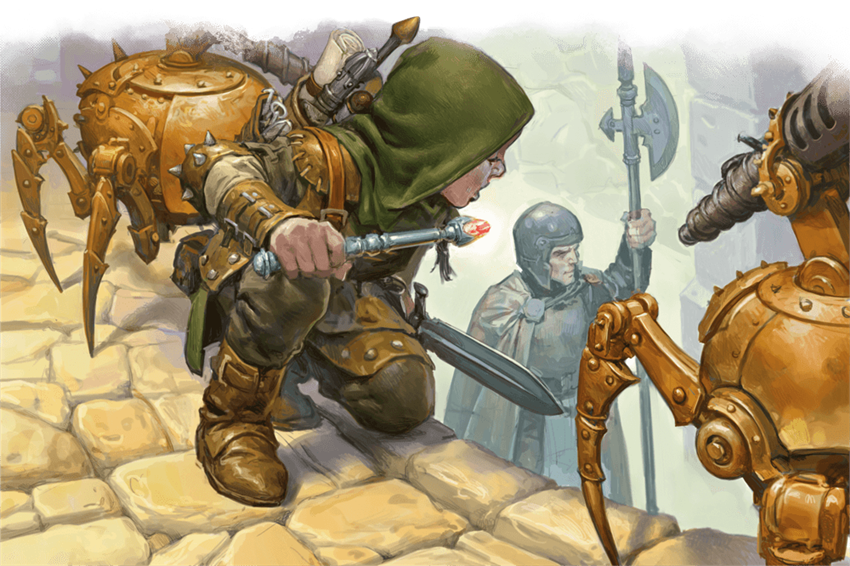
For Players: Basic Teamwork
You can’t do everything yourself. Fortunately, you have a party of other adventurers on your side, willing to help you handle any threat that comes your way. Each D&D character has a wide variety of abilities that only they can do, or that they can do better than anyone. Rogues are stealthy and gain extra damage when they have advantage in combat. Fighters have incredible staying power and consistent damage output, and tend to be strong enough to grapple even powerful monsters and force them to stay in place. Clerics can heal and improve their allies’ innate abilities. Wizards can deal explosive area-of-effect damage, and grant their allies magical abilities like water breathing and flight. And that only scratches the surface of the depth of tactical powers that the twelve classes of D&D can have, to say nothing of unique combinations of feats and racial traits.
Tactics are more than your character’s “build,” but good tactics do start with knowing how to use your class features. Look over your character sheet and think about what your class features can do. What are your options on any given turn? What are some features that aren’t always useful, but could be incredibly powerful in a specific situation—like a cleric using their Channel Divinity to Turn Undead, which only works against certain types of creatures.
Now that you know what you can do on your own, talk with your fellow players and learn what their characters can do. How can your abilities work well together? For instance, a cleric that casts guiding bolt can give the next character to attack the spell’s target advantage. That’s useful for anyone, but it’s especially powerful if a rogue is the next attacker, since the rogue gains Sneak Attack whenever they have advantage!
Rules Tip: Readied Actions
If you want to be especially tactical, consider making use of readied actions. In the guiding bolt example above, only the next attack against the target has advantage. If the cleric goes right before the rogue, that’s an easy decision. But what if the initiative order looks like this?
- Cleric
- Monster
- Druid
- Fighter
- Rogue
There aren’t any other minions around for the fighter and druid to take care of, so it only makes sense to attack the monster and “waste” the rogue’s chance at Sneak Attack. Or, you could have the druid cast a spell (that doesn’t require an attack roll) and have the fighter take the Ready action. To do this, you choose two things: a trigger, and an action. You can only ready actions, not bonus actions. You can ready movement, but not movement and an action. In this case, the fighter would want to move up to the monster on their turn, then take the Ready action, specifying that they will take the Attack action against the monster after the rogue attacks it.
Then, when the trigger occurs (in this case, the rogue attacking the monster with advantage from the cleric’s guiding bolt) the fighter can use their reaction to take the attack action. This is an extra bit of tactical skill that will help you and your allies become an unstoppable team in combat.
Once you’ve identified a few synergies that you and your allies can use together in combat, you’re off to the races! This doesn’t have to be anything fancy; even something as simple as knowing that your fighter’s Strength score of 16 will allow them to long jump over your wizard’s 10-foot-square of grease without trouble is a useful tactic to keep in mind!

For Dungeon Masters: Tactics, Storytelling, and the Mental Load
Next week’s installment of New Player’s Guide will break down how to create top-notch tactical encounters. I wanted to include it in this article, but it’s far too broad a topic to cover in just one section of an article—it deserves its own.
Instead, let’s talk about a somewhat controversial subject: storytelling and tactics. It’s a common belief that playing D&D with maps and minis strips away the roleplaying element of D&D, turning it into a hack ‘n slash board game. Anyone who’s watched Critical Role knows that this isn’t true. Nevertheless, there is an element of truth to this otherwise spurious claim, and it lies in the DM’s mental load.
A DM isn’t a computer, they’re only human. Like a computer, however, a DM only has a limited amount of memory and processing power. Trying to do too many tasks at once, like juggling three different types of monsters, flipping through the Player’s Handbook for spells, making smart tactical decisions, and still roleplaying as the monsters, causes the poor overloaded DM to crash. Well, usually the DM doesn’t crash, but one of the umpteen processes they’re trying to run crashes and gets sidelined for the duration of combat.
The trick is, usually that’s roleplaying. And it’s not just that the DM stops putting on a deep, gravelly voice for their hobgoblin general, it’s that the enemies stop acting like creatures with specific wants and motivations. Some DM’s default to making their monsters all just start act like kill-machines, doing what’s tactically optimal rather than what the monster itself would do. Most monsters don’t act like tactical geniuses, especially creatures with low Intelligence and Wisdom, like most beasts, undead, oozes, and monstrosities. They’re creatures of instinct, quick to anger, easy to scare, and even easier to dupe.
Other DMs flip the other direction, and have all of their monsters start acting like instinct-driven beasts, trying to deal damage at any cost without any thought to clever tactics—even for intelligent creatures. We’ll talk next week about the three pillars of tactical combat, but a lot of DMs throw those pillars out the window when they get overloaded, so their combats end up being interesting character moments but tactically dull; essentially, it’s just a Theater of the Mind combat that takes way too long to set up because of all the maps and minis.
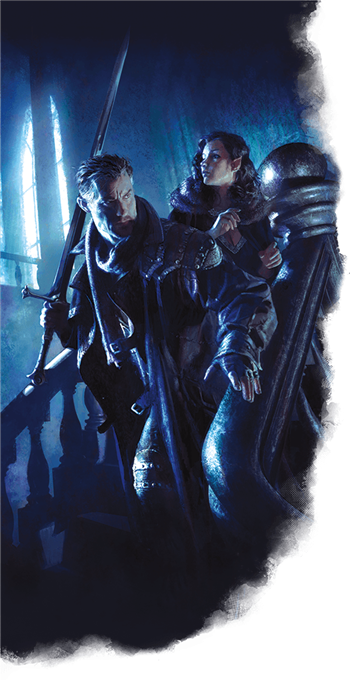 This is where the false dichotomy of roleplaying versus tactical combat comes in; doing both is a lot of work for the DM. And if you’re not prepared for it, you’ll end up dumping some of the mental load in order to keep your brain from crashing. Some DMs, like Matthew Mercer, have done this for ages. They’ve optimized their mental CPU to handle all the different tasks they need to do. Some people’s brains aren’t wired that way, yet or ever. That’s okay, because there are ways around keeping all of those vital bits in your head.
This is where the false dichotomy of roleplaying versus tactical combat comes in; doing both is a lot of work for the DM. And if you’re not prepared for it, you’ll end up dumping some of the mental load in order to keep your brain from crashing. Some DMs, like Matthew Mercer, have done this for ages. They’ve optimized their mental CPU to handle all the different tasks they need to do. Some people’s brains aren’t wired that way, yet or ever. That’s okay, because there are ways around keeping all of those vital bits in your head.
One way—and I suspect this is how expert DMs like Mercer do it—is by instinctually knowing which tasks can be safely “put to sleep” without any loss of performance. Do I need to care about hit points? Maybe I’ll just say the monster dies after four strong hits. Do I need to care about that lich’s 1st- through 5th-spell slots? Nah, it’ll die before it uses ‘em all anyway. Take shortcuts and simplify your task.
The other way is to offload tasks onto your players. Do you really need to be the person to call out whose turn it is? Maybe ask one of your players to track initiative instead of you. Sure, that means you tell them when the monsters are going to act, but that’s not the worst thing in the world. If you want to get really dangerous, ask your players to track the monsters’ hit points—or at least, how much damage each monster has taken. The characters should have a clear idea of how physically wounded all the monsters they can see are, so is that really so strange?
Little things like this take an immense bookkeeping burden off of the DM, and it’s worth considering if you’ve started a campaign with tactical combat, but feel your in-battle roleplaying skills slipping. Since this is such a big change for the players, you might want to talk about it with them in a Session Zero beforehand. After all, some players have their hands full with just their own character already—most cleric, druid, and wizard players do, with all those spell slots to keep track of. And some players might just not be interested in doing the DM’s busywork. That’s totally valid. But most players probably don’t mind either way, and would be happy to help ease your burden by handling initiative or counting how much damage monster has taken.
If you’re interested in creating tactically interesting and incredibly fun combat encounters, check out next week’s installment of New Player’s Guide. We’re talking about how to build tactical encounters like a pro.
Create A Brand-New Adventurer Acquire New Powers and Adventures Browse All Your D&D Content
 James Haeck is the lead writer for D&D Beyond, the co-author of Waterdeep: Dragon Heist, Baldur's Gate: Descent into Avernus, and the Critical Role Explorer's Guide to Wildemount, a member of the Guild Adepts, and a freelance writer for Wizards of the Coast, the D&D Adventurers League, and other RPG companies. He lives in Seattle, Washington with his fiancée Hannah and their animal companions Mei and Marzipan. You can find him wasting time on Twitter at @jamesjhaeck.
James Haeck is the lead writer for D&D Beyond, the co-author of Waterdeep: Dragon Heist, Baldur's Gate: Descent into Avernus, and the Critical Role Explorer's Guide to Wildemount, a member of the Guild Adepts, and a freelance writer for Wizards of the Coast, the D&D Adventurers League, and other RPG companies. He lives in Seattle, Washington with his fiancée Hannah and their animal companions Mei and Marzipan. You can find him wasting time on Twitter at @jamesjhaeck.








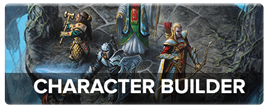
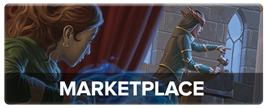
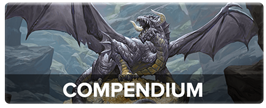
-
View User Profile
-
Send Message
Posted May 4, 2020I think this causes less meta-gaming issues compared with waiting for certain types of enemy triggers. If you know your fellow adventurers' fighting styles, and have been going on several quests together, you should know that your rogue buddy is waiting for that opening, or that your trigger-happy wizard is about to launch a fireball so you shouldn't rush in.
-
View User Profile
-
Send Message
Posted May 5, 2020”If anyone is worried that playing in a way that emphasizes game mechanics and tactics, don’t worry. The cast of Critical Role play this way, and Matthew Mercer makes combats that are able to be tactical and story-driven all at once. You can have the best of both worlds!“
yes but he is also an expert dm that already has a worldbook. Some of us dms aren’t as experienced or as good storytellers as Mathew Mercer.
With respect, it's not that hard to do. None of this is beyond anyone with a modicum of communication skill. Matt's experienced, as you say, but he's no demi-god. Give it a go; start small and with the support of your players.
-
View User Profile
-
Send Message
Posted May 5, 2020Fair, I just feel like for a first time dm reading this article that would be pretty daunting, especially if they know critical roll well and all of my players have never played before so I also have to stop combat a lot to explain various skills and class abilities.
-
View User Profile
-
Send Message
Posted May 5, 2020This helped me a lot. Thanks!
-
View User Profile
-
Send Message
Posted May 5, 2020These issues are the entire reason I am here on DnD Beyond, it handles a lot of the important yet trivial information so I can focus more on being a good DM. It's why I'm enjoying the alpha of the combat tracker too.
-
View User Profile
-
Send Message
Posted May 5, 2020Wow, good analysis, I agree to combine both styles.
-
View User Profile
-
Send Message
Posted May 6, 2020That's exactly it, though. You want the rogue to get the advantage because, as a general rule, a rogue's sneak attack will do more damage than a fighter's first attack. Fighters get a lot of medium attacks - rogues get one big one.
-
View User Profile
-
Send Message
Posted May 6, 2020This is true, but I can't decide if it belongs in this article or not. This is sort of medium-level tactics, not beginner, but the advice in the article doesn't really make sense without understanding why the rogue should be the one who gets to "use" the guiding bolt.
-
View User Profile
-
Send Message
Posted May 7, 2020Excellent post as always!
Some tasks I have shifted to my players:
-tracking initiative (I have a knitting needle pounded through a block of wood and they painted their names on clothes pins, spin it around after the turn)
-handing out inspiration (but if they go overboard I get to give inspiration to monsters!)
-moving enemy minis when we are playing on a map
-
View User Profile
-
Send Message
Posted May 7, 2020So, like 4e+5e? Combat wise?
Also, is putting a link in the comments "violating the terms of service"? just wondering.
-
View User Profile
-
Send Message
Posted May 8, 2020I would really love to see a guide to tactical combat on a budget, it seems like miniatures can get really expensive!
-
View User Profile
-
Send Message
Posted May 8, 2020They can be! There are lots of methods out there for producing free paper tokens or standees, if minis don't fit in your gaming budget. I'm personally a big fan of Printable Heroes, though I've gradually collected enough minis over the years that I'm not in dire need of paper figures.
-
View User Profile
-
Send Message
Posted May 8, 2020Legos. We started with minifigs for our PCs and mostly just blocks for enemies. Also makes for quick walls, just make a couple corner pieces and you can visualize where the walls join them.
Small pieces of cardboard, sketch your figure on them in ink.
See if your friendly local game shop helps people swap figures, or resell once people are done with them.
-
View User Profile
-
Send Message
Posted May 8, 2020Wyloch's Armory on YouTube has a tutorial on making paper minis from your computer...
-
View User Profile
-
Send Message
Posted May 9, 2020Our group only discusses tactics player to player outside of combat or other situations where our DM says the game is on pause. We drop the roleplaying to clarify ideas, tactics and information about our characters quickly so, we can get back to the game. This would be done when we have the opportunity to set the time frame of an event, like setting up an ambush or requesting an audience with a noble lord to gain his support. When we have ideas during active combat or roleplaying, the ideas are presented character to character through roleplaying and following initiative rules.
I found this article very interesting, a good read and good addition towards promoting exceptional team play.
-
View User Profile
-
Send Message
Posted May 10, 2020Regarding the tactics of the Guiding Bolt and Rogue combo: I think that's actually a rather inefficient way to do that.
Extra Attack only activates on your turn, so unless this is a 1st-4th level party, the Fighter is actually losing out on at least one attack by readying an action to attack outside of their turn. I propose that it's more beneficial to actually have the Rogue ready their action to attack when the Cleric casts the Spell. Since Sneak Attack can be triggered once per turn, it still activates on another creature's turn.
-
View User Profile
-
Send Message
Posted May 10, 2020Huh, you learn something new every day. I never noticed the highly specific language regarding Extra Attack. That's a surprise to me!
-
View User Profile
-
Send Message
Posted May 10, 2020Right? I actually realized the way Extra Attack interacts with Ready Action somewhat recently, is why it stood out! I'm always learning "new" things (aka things I've overlooked or misread haha).
-
View User Profile
-
Send Message
Posted May 10, 2020As others have said, great article, especially the part about the DM's challenge and the balance between running the encounter and keeping the roleplay up. I was introduced to DnD 10 years ago at an age, where your professional life consumes a lot of time and brain power. This made it hard for me to really grow into the world with all its details, monsters etc. Great DM's know the world where the adventure takes place, are super familiar with the essence of the monsters that they throw at the parties, and the motivations of the NPC's on the board.
To me, not being able to play as often as I want or read as much as you should as a DM and not having played enough as a player, the biggest challenge is to juggle the complexity of the world and the rule set in my head. Tactical encounter or not, to me what helps is having visualised the relation between NPCs and the adventure in a short, concise form (kind of mind map), and for each combat encounter having a table with all monsters and their key actions, key characteristics, defences and hit points written down in short form. I even pre-roll their initiative so that my mind can immediately be in the situation - all formalities out of the way.
I usually keep track of initiative myself, since it helps me also think tactically for the monsters and guide new players. And yes, we totally prefer running the combat on a grid, with miniatures (and yes, we have "a few"). There is a huge visual excitement to have the coolest monsters or just vast numbers of goblins or orcs flooding the battle field.
But there are also some traps in using maps and miniatures: only show the map after saying "roll initiative". It pays off letting the team initially explore or crawl through a dungeon without a map, since as soon as there is a map the mindset changes, unwillingly. It is like reading a book or seeing the movie. Reading the book you visualise the world, including things the author may not have thought about. Seeing the map most players go into battle mode, even though there could be other options.
Also, for new players seeing the monster helps describing what they are up against, especially if English is not the DM's first language but you DM for native English speakers; it paints the picture that you may not able to paint with your vocabulary. However, my experience shows me again and again that players who know the miniatures and have played DnD "all their life" will tend to metagame, whether they want to or not. As soon as the monster appears on the grid they call out "Ah, blast, a bonedevil" etc. So from time to time I either alter a monsters stats or just use a different miniature to break the link.
Regarding the balance of tactical thinking vs role playing: I am sure I still suck at it, even though I like to speak in pictures even in daily life. But reading through your article made me reflect that maybe, forcing myself to roleplay and constantly describe what happens could actually take out the "speed pressure" of action action action. Those, that will never be the masters of their numbers would grow if roleplaying is kept up, and using time to roleplay can give players time to plan and will probably inspire the next move. I might "encourage" a rule that before naming the action, DM and players have to describe the thinking, motivation and expressions of there character.
Finally, having a map and miniatures allows for the quick snapshot when running out of evening in the middle of a battle, so you know next time where you left off.
-
View User Profile
-
Send Message
Posted May 10, 2020In the beginning (new players) it is probably good to discuss these things during combat, learn in context. Later on, I would encourage to roleplay these discussions: you could be a wise leader passing on experience, or in character (!!!) be "pissed" about somebody jumping the gun too early (taking somebody's advantage) and with that having the everybody's lifes hanging by a thread. And still, during combat a player could have her/his character make sign language or just shout that he will "Light up the orc-chief" and "that will help Bob with his lousy aim - now you know whom to hit really hard" :) It will probably add a lot of fun, trying to find a way to convey such a strategy without meta gaming.